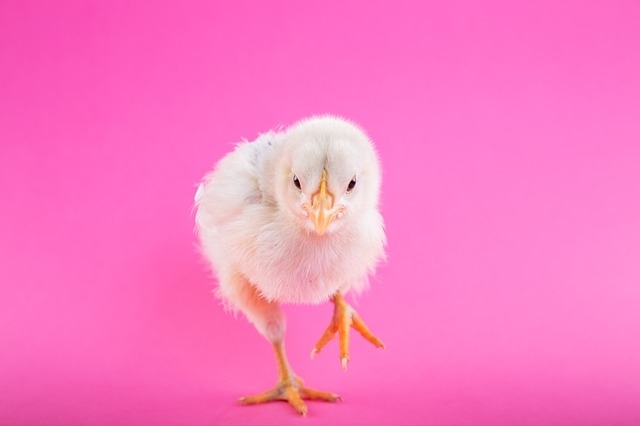

Brazilian researchers demonstrated this finding in experiments with broiler chicks. Regulated hypothermia, a strategy of the immune system also observed in mammals, is a way to avoid the high energy expenditure entailed by maintaining a fever under unfavorable conditions (image: Pixabay)
Brazilian researchers demonstrated this finding in experiments with broiler chicks. Regulated hypothermia, a strategy of the immune system also observed in mammals, is a way to avoid the high energy expenditure entailed by maintaining a fever under unfavorable conditions.
Brazilian researchers demonstrated this finding in experiments with broiler chicks. Regulated hypothermia, a strategy of the immune system also observed in mammals, is a way to avoid the high energy expenditure entailed by maintaining a fever under unfavorable conditions.

Brazilian researchers demonstrated this finding in experiments with broiler chicks. Regulated hypothermia, a strategy of the immune system also observed in mammals, is a way to avoid the high energy expenditure entailed by maintaining a fever under unfavorable conditions (image: Pixabay)
By André Julião | Agência FAPESP – Fever is an important response to help the organism combat infection, but it has a high cost in terms of energy expenditure. Mammals and birds may therefore lower their temperature instead of raising it when conditions are unfavorable to the production of a fever. Infection can be combated later, once energy is again abundant.
In an article published in the Journal of Experimental Biology, researchers at São Paulo State University (UNESP) in Brazil describe how regulated hypothermia can help birds tolerate infection. The findings of the study, which was supported by FAPESP, are explained in lay language in a special feature elsewhere in the same issue.
Earlier research by the same group demonstrated that the mechanism, previously described in mammals, also existed in birds and suggested that it may have been inherited from a distant ancestor common to both or developed independently (more at: agencia.fapesp.br/38426).
“This time we infected broiler chicks with a large dose of a lipopolysaccharide from the cell walls of a bacteria to simulate infection without actually causing disease. We then measured how they coped with infection in four different scenarios: when they were warm and well-fed, cold and well-fed, warm and hungry, or cold and hungry,” said Lara do Amaral Silva, who conducted the study as part of her PhD research at the School of Agrarian and Veterinarian Sciences (FCAV-UNESP) in Jaboticabal, with a scholarship from FAPESP.
A fever appeared in the chicks that were warm and well-fed about three hours after they were infected. The body temperature of the chicks that were cold and hungry fell 2 °C in the first hour after infection and then rose gradually, but even six hours after they were infected, it was still 0.5 °C lower than normal. This length of time had not been observed in the group’s previous research, and they had expected a fever to appear by then. The results for the other two groups of chicks lay between these extremes.
“When the cold fasting chicks were infected, they directed more blood to the skin and panted to let more heat leave their bodies. They were clearly keeping themselves cool, very probably in order to save energy while prioritizing maintenance of vital functions over fighting the infection,” said Kênia Cardoso Bícego, a professor at FCAV-UNESP and principal investigator for the study.
To find out whether the chicks challenged with cold and hunger were still able to raise their metabolic rate and produce fever, the researchers injected a drug that increases metabolism. Theoretically, therefore, the chicks should have had more than enough energy to raise their temperature. However, even with the higher metabolic rate induced by the drug, their temperature did not rise. They again actively sought to lose heat, showing that inhibition of fever was regulated by the organism and not a failure of the immune system.
“The results underscore the conclusion that a drop in temperature during severe infection isn’t a collapse of the organism, as has been argued. On the contrary, it’s an energy-saving response, given that raising the body’s temperature requires a great deal of energy. In addition, lowering body temperature was prioritized when the chicks had to cope with other challenges, such as cold and hunger,” Bícego said.
The article “Metabolic trade-offs favor regulated hypothermia and inhibit fever in immune-challenged chicks” is at: journals.biologists.com/jeb/article-abstract/225/4/jeb243115/274497/Metabolic-trade-offs-favor-regulated-hypothermia?redirectedFrom=fulltext.
Republish
The Agency FAPESP licenses news via Creative Commons (CC-BY-NC-ND) so that they can be republished free of charge and in a simple way by other digital or printed vehicles. Agência FAPESP must be credited as the source of the content being republished and the name of the reporter (if any) must be attributed. Using the HMTL button below allows compliance with these rules, detailed in Digital Republishing Policy FAPESP.





